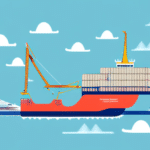What Does 'In Transit' Mean for FedEx Deliveries?
If you've ever received a package from FedEx, you've likely seen the phrase 'In Transit' at some point in the tracking information. But what exactly does this status mean for your package and its delivery? In this article, we'll dive deep into the world of FedEx deliveries, exploring everything from the delivery process and scanning technology to weather conditions and common misconceptions about the 'In Transit' status.
Understanding the FedEx Delivery Process
Before we can fully understand what 'In Transit' means, it's important to have a grasp of the FedEx delivery process. FedEx has a highly efficient and sophisticated system in place to ensure that packages move quickly and in the correct direction. This system relies on a combination of technology, logistics, and human expertise.
Package Pickup
First, packages are picked up at a sender's location and transported to a sorting facility. This initial step sets the stage for the entire delivery process.
Sorting and Routing
At the sorting facility, packages are scanned and routed based on their destination. Advanced sorting machines and barcode scanners ensure that each package is directed to the correct next point in the delivery chain.
Transportation
From the sorting facility, packages are moved to transport vehicles—whether by truck, plane, or other modes of transportation—and driven to the next facility or directly to the destination area.
Final Delivery
Once the package reaches its final destination facility, it is sorted once again and delivered to the recipient. Each step of the process is conducted with precision and care, ensuring packages are tracked along every step of the way.
Delivery Options
FedEx offers a range of delivery options to suit different needs. Customers can choose specific delivery dates or times, opt for flexible delivery windows, or select international shipping services that involve additional steps such as customs clearance and documentation.
Tracking and Managing Your 'In Transit' Shipment
The 'In Transit' status indicates that your package has been scanned and is moving between its originating and destination facilities. This status is a natural and necessary part of the delivery process.
Tracking Tools
FedEx provides a convenient tracking tool on their website. By entering your tracking number, you can view your package's current status, previous scans, and estimated delivery date.
Customer Support Options
If you have concerns about your package's status, FedEx customer service is available to assist. You can reach out via phone, online chat, or visit a local FedEx location for support.
Common Reasons for Delays in FedEx Deliveries
Despite FedEx's efficiency, there are instances where a package may experience delays. Understanding these reasons can help manage expectations and take proactive steps to mitigate delays.
Weather Conditions
Severe weather, such as hurricanes, blizzards, or heavy rain, can significantly impact delivery times. According to the National Oceanic and Atmospheric Administration (NOAA), weather-related disruptions are a leading cause of shipping delays annually.
Misrouted Packages
Occasionally, packages may be scanned incorrectly or placed on the wrong vehicle, leading to misrouting. This can cause unexpected delays as the package is redirected to the correct destination.
Inaccurate Address Information
If the address on the package is incomplete or incorrect—missing details like an apartment number or zip code—it may take longer for the package to reach its intended recipient. In some cases, the package may be returned to the sender.
High Volume Periods
During peak seasons, such as holidays or major sales events like Black Friday, FedEx may experience a backlog of packages. This increased volume can lead to longer transit times and potential delays.
External Factors
Other external factors, including global events or natural disasters, can also impact delivery timelines. For example, international shipping may be affected by customs delays or geopolitical issues.
Best Practices for Ensuring Timely FedEx Deliveries
While some delays are unavoidable, following these best practices can help ensure a smooth and timely delivery process with FedEx:
- Double-Check Address Information: Ensure all address details are accurate and complete to prevent misrouting.
- Choose Appropriate Shipping Options: Select the shipping service that best fits your timeline and destination needs.
- Be Available for Delivery: Make sure someone is available to receive the package at the estimated delivery time.
- Monitor Your Shipment: Use FedEx's tracking tools to stay informed about your package's status and any potential delays.
Addressing Misconceptions and External Factors in 'In Transit' Status
There are several misconceptions about the 'In Transit' status that can cause unnecessary concern. Clarifying these can lead to a better understanding of the delivery process.
Common Misconceptions
Some individuals believe that 'In Transit' means their package has been lost or stolen. In reality, it simply indicates that the package is on its way. Additionally, the belief that packages are delivered in a single line from origin to destination overlooks the complex network of routes and transport vehicles involved.
Role of Scanning Technology
FedEx utilizes advanced scanning technology to track packages throughout the delivery process. Each scan updates the package's status, providing real-time information and ensuring transparency.
Impact of External Factors
External factors such as natural disasters, political unrest, or global pandemics can disrupt the supply chain, affecting delivery times. Staying informed about such events can help anticipate potential delays.
Final Thoughts
The 'In Transit' status is an integral part of the FedEx delivery process, signaling that your package is actively moving toward its destination. By understanding the delivery process, utilizing tracking tools, and following best practices, you can manage your expectations and ensure a successful and timely delivery experience.






















